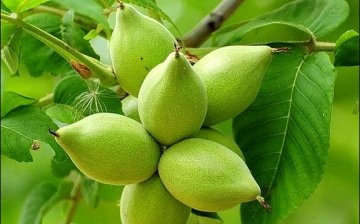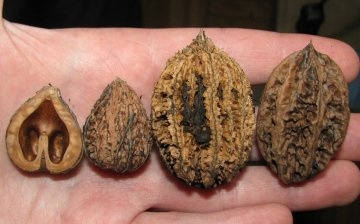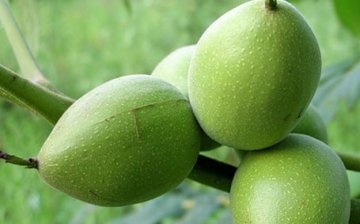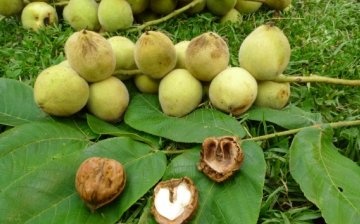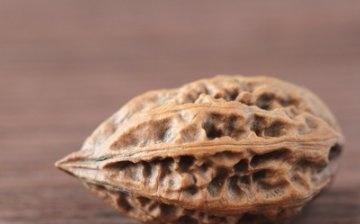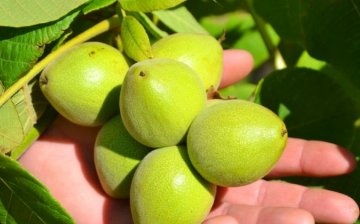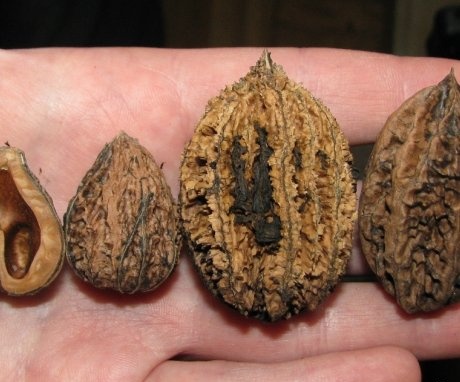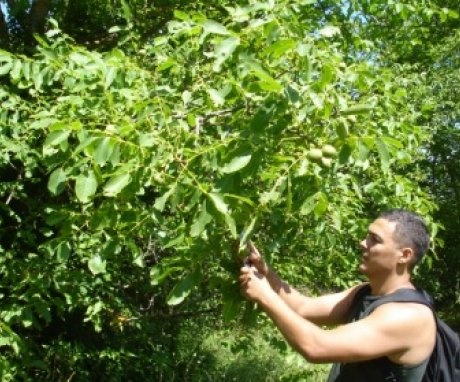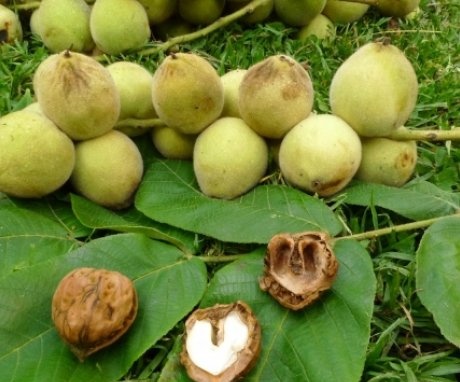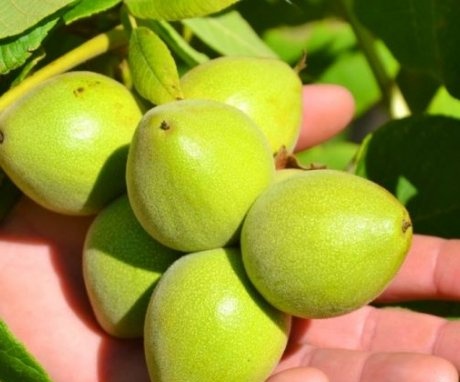Manchurian walnut: planting and best care tips
Manchu (also called Dumbey) nut is a deciduous tree with a round, ball-like crown. Refers to monoecious plants, that is, male and female flowers grow on the same tree. The homeland of the Manchu nut is the Far East, the Korean Peninsula, North China.
Content:
- Description of the plant
- Seed propagation
- Planting a Manchu nut
- Walnut care
- Diseases and pests of the Manchu nut
- Harvesting
- Application
Description of the plant
This plant belongs to the same genus as Walnut, in contrast to which it is more resistant to cold weather and can withstand frosts down to minus 42 C. Due to its highly developed root system, it can withstand strong gusts of wind. Due to such a powerful root system, the tree requires a lot of space to grow. Therefore, allow yourself grow it can be used by owners of large garden plots.
The first fruits appear in five to ten years, and the Manchurian nut bears fruit every two to three years.
Wood in height it can reach 27 meters, in diameter one meter. The plant has a lifespan of over 200 years. Walnut leaves are wide, spreading, usually about 50 centimeters long, can grow up to a meter. This kind walnut he defends himself against pests, thanks to the phytoncides secreted by the leaves. The flowering period is late May - early June.
Useful properties of the Manchurian nut:
- Manchurian walnut purifies the atmosphere by trapping dust and gas, gasoline and acetylene vapors. It secretes juglone, a substance that serves as a natural antiseptic, disinfecting the air.
- It is considered a good agent with antimicrobial, antiseptic, antifungal properties. It heals wounds well, can act as an anthelmintic and astringent agent.
- The nut contains phytoncides, tannins, alkaloids, trace elements, ascorbic acid. The Manchu walnut has very fat kernels, with an oil content of about 55%.
- A decoction of the leaves and their infusion are used for inflammatory diseases of the gastrointestinal tract, diarrhea, they help well with rickets and exudative diathesis.
- Delicious and nutritious kernel oil. The shell of a Manchurian nut contains a large amount of iodine, which is indispensable in the treatment of thyroid diseases.
Seed propagation
Manchurian walnut is mainly propagated seeds, which retain the germination property for 2 years. They can be prepared for sowing in several ways:
- Soak the seeds in water for ten days. Change the water regularly.
- Soak the seeds for one day in warm water, then change the water, lowering its temperature every day. The duration of the procedure is two months. Bring the water temperature to five to seven degrees.
- In the fall, the seeds are soaked at 20-25 degrees for thirty days, then taken out into the snow until spring.
- The faster way is the seeds in early March, put in hot water for a day, then put in sand and leave at room temperature. The seeds will germinate in a month.
- Another way is to withstand during the winter the seeds in a refrigerator. Two weeks before planting, put the seeds in warm water, which must be changed every day.
After wintering in the refrigerator, you can put the seeds in a container of water so that they are more than half covered with liquid. Floated nuts must be thrown away. When the flaps open (after about 2-7 days), place the nuts in moistened sawdust or sand. They are placed on the edge, sprinkled with the same (sawdust or sand) and kept at a temperature of 25-28 degrees. Seeds germinate within ten days.
When the roots grow to a length of 1 cm, we transfer the containers to a cool room, where it is possible to maintain a temperature of three to five degrees. It can be a loggia or a balcony. There they will grow until they are planted in the soil. The Manchurian nut can also reproduce itself. But, as a rule, the seeds do not have enough moisture in the soil, and they dry out.
You can sow a nut both in spring and autumn.
Better to plant seeds in the fall after harvest harvest, they are not needed stratify (harden), and seedlings appear several weeks earlier than when planted in spring. Spray the nuts with kerosene to scare away mice, and cover with 5 centimeters of earth. After sprouting in the spring, water them regularly.
Nut transplanting is hard, so it is recommended to plant young seedlings in their place as soon as possible. Already two years old seedlings have a sufficiently developed root system, and there is a high risk of damage during transplantation. To form a trunk (the interval of the trunk from the roots to the first lower branch), if necessary, carry out pruning.
Planting a Manchu nut
Transplant the Manchurian nut to a permanent place in the spring (in April) or in the fall (in September). Plant the tree is recommended on the north side, but remember that it will take up a lot of space as it grows. Calculate the distance to it from other plants accordingly.
On the site intended for Manchurian walnut, the land should be fertile and moist.
The nut does not tolerate acidic soil well, grows well in a slightly alkaline or neutral environment with a pH of 6.5-7.5. To achieve these conditions, wood ash or phosphorus-potassium fertilizers (the amount depends on the type of soil).
Tips for planting a nut:
- To plant a nut, the garden must be dug up, going deep about ten centimeters, sprinkled with ash and loosened. Then mark the holes, keeping a distance of about ten meters between them.
- Provided that you immediately land on a permanent place the seeds (nuts), place them about eight centimeters deep. Nuts you need to put on the edge, one meter, ten or fifteen pieces. Then they are covered with earth and a layer of straw or sawdust is placed on top (mulcht) for better moisture retention.
- When planting seedlings, make holes 80 centimeters deep. Pour drainage into each hole, it can be stones, rubble, broken brick. Place a layer of soil on the drain, which is mixed in equal parts with humus, sand and turf. Put a seedling on the prepared soil in the hole, tie it to a peg and cover it 4/5 of the height with earth, water it abundantly, wait seven minutes until the water is absorbed and fill in the rest. Press lightly on the soil around the trunk and sprinkle it on top with a thick layer of sawdust or peat. This must be done to protect the seedlings from frost.
After transplanting, the nut requires a lot of moisture, so you need it regularly to water in several steps. If the weather is dry, spray the seedlings with a hose.
When planting seedlings, you need to prune the roots, otherwise the nut will grow slowly. In advance - cut off the taproot of a young seedling at a depth of 30-40 centimeters, which goes into the depths. This will stimulate the growth of lateral roots, and the roots will not be severely damaged during transplantation.
When planting sprouted nuts, the taproot must be pinched off, in this case it will be possible not to cut the roots.
In order for the plant to take root and grow well, it must be correctly positioned relative to the cardinal points. Plant the seedlings according to their original location, that is, "south side" - to the south, "north" - to the north.
Walnut care
Manchurian walnut is an unpretentious plant and does not require much leaving:
- The tree loves moist soil, so you need it often to water... Adult plants are watered about four to five times a season with sufficient rainfall, two and three year old seedlings seven or eight times. If the year is dry, you need to water the tree every week with 20 liters.
- To avoid stagnation of water at the trunk, the soil must be regularly loosened and cleaned weeds... To keep the soil moist and make it difficult for weeds to grow, sprinkle mulch on the ground after this procedure.
- At the end of the growing season and flowering, the amount of watering should be reduced. This is necessary to prepare the tree for winter (the end of growth and maturation of the wood).
- The tree is frost-resistant, and after frost damage, the nut quickly recovers and begins to bear fruit.
- If the tree is badly damaged by burns, you need to cut off the trunk and leave a low stump. Trunk circles are necessary process - weed, loosen, sprinkle with mulch. From the base of the hemp, the formation of processes will quickly begin, from which new trunks are formed.
- You can protect a tree from sunburn by placing tall trees on the south side of it (spruce, fir, birch) at a distance of about ten meters.
- To save the trunk, plant large shrubs (irga, viburnum).
- For the first three years, the seedling will need to be covered with peat, dry foliage or just burlap. At the end of summer, the tree must be fed with superphosphate (20 grams per 10 liters) of water or ash.
- When the Manchu walnut grows in an open area, it takes the form of a large bush. The branches in the lower part of the trunk gradually thicken, forming new trunks. Thanks to this multi-stem shape, the tree becomes more protected from sunburn.
The Manchu nut usually molds itself. You need to cut off dried and poorly located branches, which make the crown unnecessarily thick. It is better to prune branches in spring, when the air temperature rises above 10 degrees.
Perfect time for trimming - the period after bud break.
After that, you should not prune branches until mid-August, this can cause re-formation of buds and growth. As a result, young shoots will freeze in winter.
The Manchu nut can be shaped in a variety of ways and at any time. It can be made as a spreading bush with many trunks or in the form of a tall palm tree. The advantage of the high position of the crown is that it does not deprive other plants in the area of sunlight.
Diseases and pests of the Manchu nut
Since the Manchurian walnut has antimicrobial properties and protects itself from pests, it is practically unaffected diseases... But it happens and it gets sick.
If the leaves of the tree turn black and begin to dry, this is a sign of a fungal disease. Treat the walnut with Fundazole or any preparation containing copper (copper sulfate 1%, Bordeaux liquid). Perform the procedure twice with an interval of fourteen days.
The main pests that can infect the Manchurian nut are not so many:
- Gall mite
- Walnut
The gall mite survives the winter in the buds and lays eggs in them in the spring. Females invade the leaves, in their central part, forming tubercles on the leaf plates. Spray the infected trees with a solution of colloidal sulfur (100 grams per 10 liters of water) during the budding period. From June, you can spray with Fufanon (0.1%) every ten to twelve days.
Abamectin gives a good result. It has a neurotoxic effect on ticks and penetrates into plant tissues to a shallow depth, without spreading throughout the entire system.
Branches that are badly damaged must be cut and burned.
It is not recommended to carry out treatment with acaricidal (pesticidal) preparations, since they are very poisonous and are even present in fruits. Although today it is the most effective way to combat ticks.
Nutcracker is an insect with two pairs of wings that affects the bark of shoots, leaves and flowers, forming bags (galls) in them. The safest method of dealing with nutcracker is to cut off the affected shoots and destroy them. When adults are already emerging from the larvae, spray the plant with a solution of chlorophos (0.2%) or karbofos (90g per 10 liters of water). In rainy, cold weather, stains may appear on the leaves.
Harvesting
Fetus is a bone 3-4 cm wide and 4-5 cm long, covered with a green shell. Inside the green pulp is a hard shell, and in it nut... In appearance, it almost does not differ from a walnut, only it weighs less. It also tastes like Walnut, which is not surprising, because the Manchu nut is the closest relative of the walnut.
Nut composition:
- 12% - core
- 37% - green shell
- 51% - shells
It is advisable to have at least two nuts of the same species, because in monoecious plants, the flowering time of male and female flowers may not coincide. In this case, the yield... The male flowers form long green earrings, while the female flowers are like racemes. The nuts ripen in September and fall to the ground. The green shell of ripe nuts becomes rough and brown in color.
Nuts are connected in bunches from three to seven pieces in each, there can also be single ones.
The fruits begin to ripen in seven to eight-year-old trees, the most abundant walnut yields are given every two years. From one mature tree, you can harvest about eighty kilograms of nuts per season.
Application
In the spring, you can collect the juice of the Manchu walnut, it tastes good enough. Contains potassium and magnesium. Medicinal properties does not contain. Can be drunk as a refreshing and invigorating drink.
Traditional medicine practitioners and homeopaths mainly use leaves, green hulls (pericarp), and unripe nuts. Other parts of the nut are also used for medicinal purposes - the shell and partitions inside it, the outer shell of the rhizome, and the bark. Manchurian nut tincture has a diuretic, vasodilating and anthelmintic effect, relieves spasms and stops bleeding, removes minor pains.
Chinese doctors claim that the extract from the peel of the Manchurian walnut helps to stop cancer and destroys cancer cells.
Fresh walnut leaves are used for better wound healing. It is necessary to knead the leaves so that they give juice, put on the wound and bandage. Young nuts (dairy) is used to make jam. You need to collect nuts for jam in July, until a hard shell has formed.
If you have some free space in your garden, take it up with Manchu walnut, you won't regret it.
More information can be found in the video.



